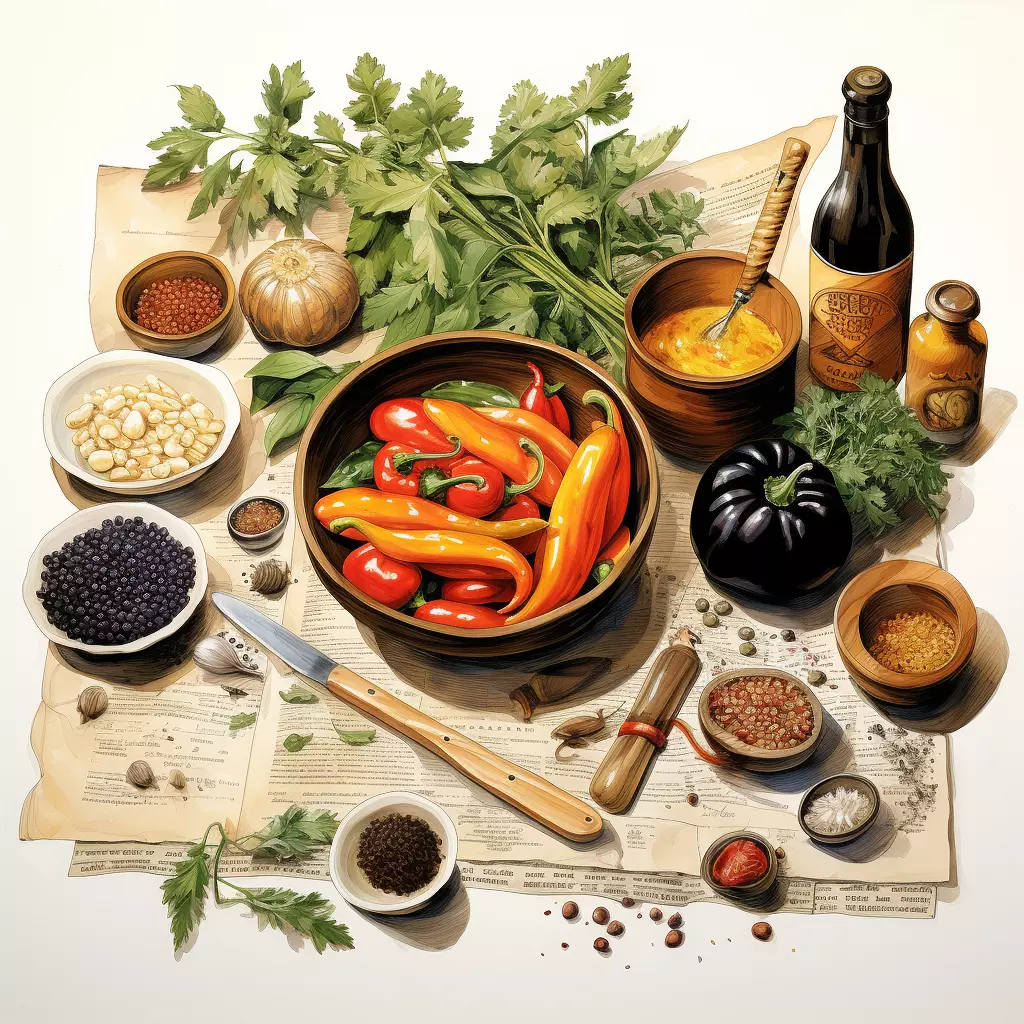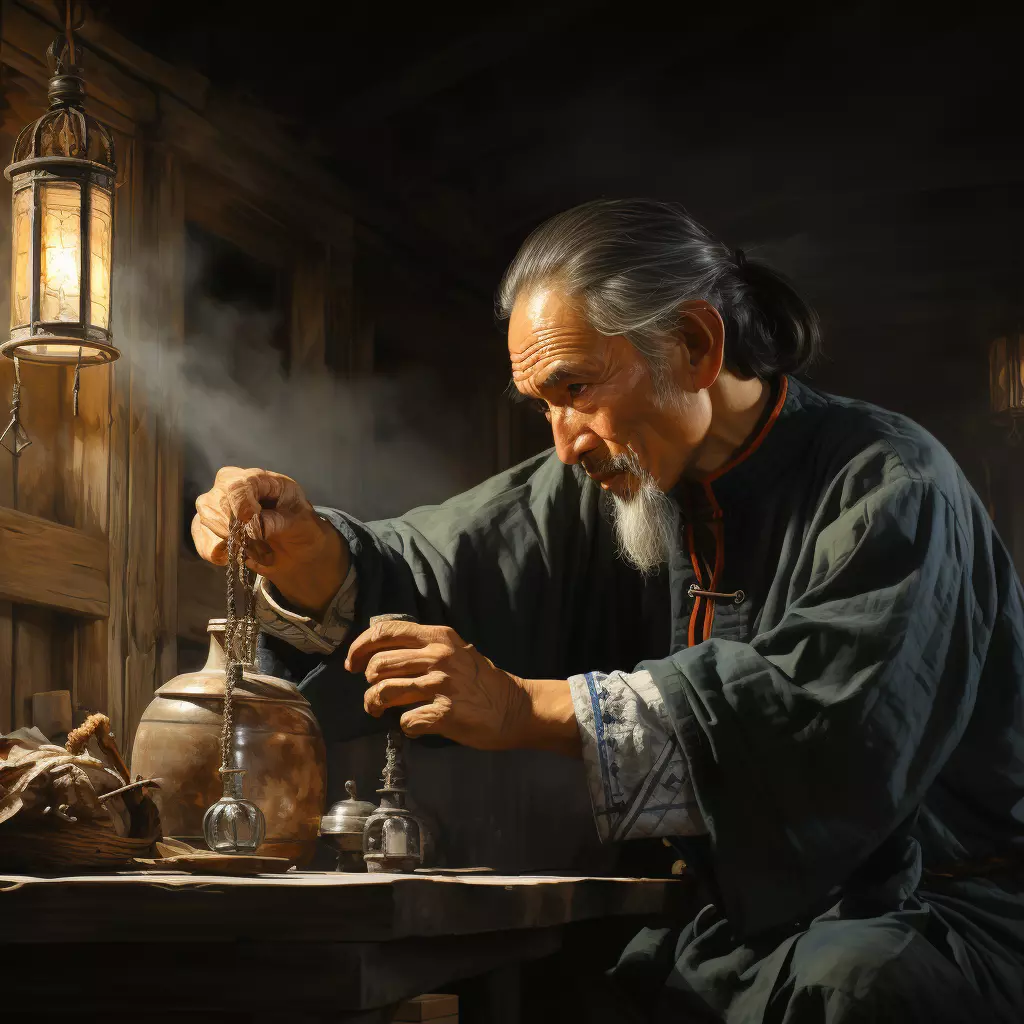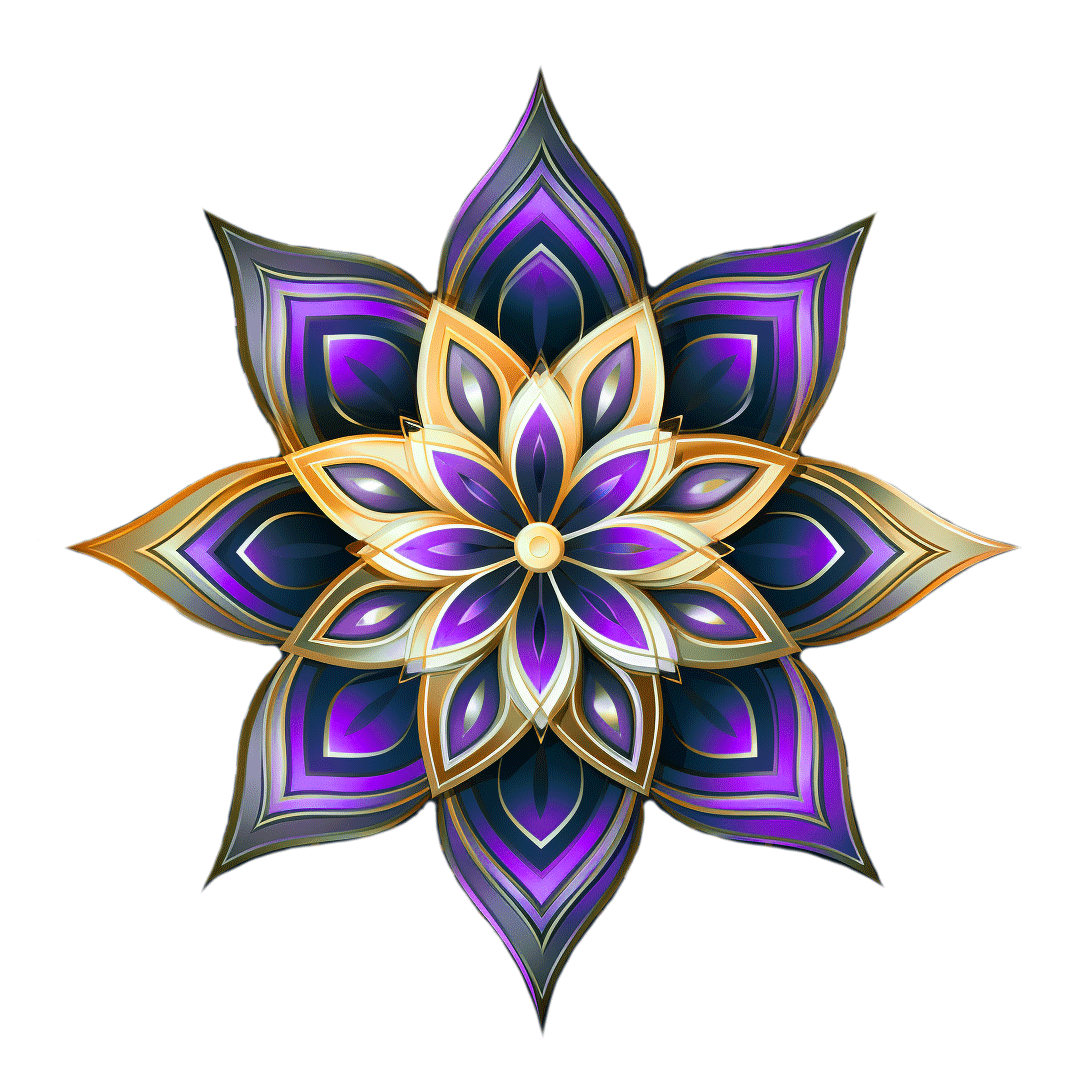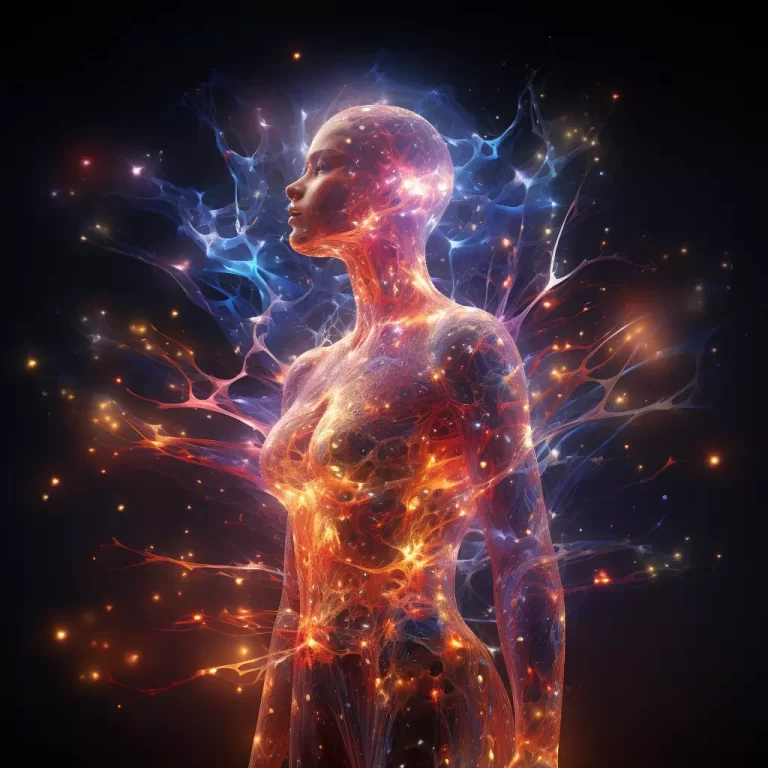
Introduction
Traditional Chinese Medicine (TCM) unfolds as an ancient tapestry woven with the threads of holistic well-being, meticulously crafted and passed down through countless generations. With a lineage stretching back thousands of years, TCM is a testament to the enduring wisdom of ancient cultures that recognized the intrinsic connection between the human body and the vast rhythms of the natural world.
This holistic approach to health stands as a profound exploration of the body as a microcosm, intricately mirroring the ebb and flow of the natural order. Within the contours of this ancient practice lie a myriad of therapies and philosophies, each with the singular purpose of restoring a delicate equilibrium and fostering harmony within the body. As we embark on this enlightening journey, this blog post seeks to unveil the hidden gems of Traditional Chinese Medicine, delving into its foundational principles, the diverse therapies it encompasses, and the timeless insights it imparts for the cultivation of overall well-being.

The Five Pillars of TCM
Central to the philosophy and practice of Traditional Chinese Medicine (TCM) are five fundamental pillars, each representing a cornerstone in the holistic approach to health and well-being. These pillars, comprising acupuncture, herbal medicine, dietary therapy, exercise, and meditation, collectively form a comprehensive system that has been refined over thousands of years. Understanding the nuanced interplay between these pillars is crucial for unlocking the profound wisdom encapsulated within TCM.
Acupuncture: Navigating the Body’s Energy Pathways
Acupuncture stands as the first pillar, representing an ancient practice that involves the insertion of thin needles into specific points along the body’s meridians. This therapeutic technique aims to regulate the flow of Qi, the vital life force, and restore balance within the body. Acupuncture is not merely a physical intervention; it is a key that unlocks the body’s energy pathways, promoting harmony and addressing a myriad of physical and emotional ailments.
Herbal Medicine: Harnessing Nature’s Remedies
Herbal Medicine forms the second pillar, rooted in the profound connection between nature and health. This pillar leverages the healing properties of various plants and substances to address imbalances within the body. Customized herbal remedies are tailored to individual needs, reflecting the personalized and holistic nature of TCM.
Dietary Therapy: Nourishing the Body from Within
Dietary Therapy represents the third pillar, acknowledging the intimate connection between food and health. This pillar offers guidance on nourishing the body in alignment with its specific needs and constitution. By embracing dietary practices tailored to individual imbalances, TCM advocates for the intrinsic healing power found in the foods we consume.
Exercise: Cultivating Physical Vitality
The fourth pillar, Exercise, recognizes the importance of physical movement in maintaining balance and vitality. TCM encourages practices such as Qi Gong and Tai Chi, which not only enhance physical fitness but also promote the free flow of Qi throughout the body. Exercise, within the context of TCM, is a dynamic expression of maintaining equilibrium.
Meditation: Cultivating Mental and Spiritual Harmony
The fifth and final pillar, Meditation, delves into the realm of mental and spiritual well-being. TCM views the mind and body as interconnected, and meditation serves as a tool for cultivating inner harmony. Whether through mindfulness practices or more structured meditative techniques, this pillar plays a vital role in achieving overall balance within the TCM framework.
In exploring the five fundamental pillars of Traditional Chinese Medicine, we navigate through a holistic tapestry that weaves together ancient wisdom and modern understanding. Each pillar contributes uniquely to the comprehensive approach of TCM, providing valuable insights into the intricate dance of balance and vitality within the body. As we delve into the depths of these pillars, we gain a richer understanding of the wisdom that underlies the time-tested practices of Traditional Chinese Medicine.

Balancing Yin and Yang
At the very heart of Traditional Chinese Medicine (TCM) philosophy lies the intricate dance between Yin and Yang, two fundamental and interdependent forces that shape the universe. In the context of TCM, these concepts extend beyond mere opposites; they represent the dynamic and complementary nature of all phenomena. This section aims to explore the profound significance of Yin and Yang within TCM and illuminate their influence on the practices that form the bedrock of this ancient healing tradition.
Understanding Yin and Yang
In TCM, Yin and Yang serve as core concepts, symbolizing the eternal ebb and flow of opposite yet interrelated forces. Yin, often associated with the feminine, represents receptivity, coolness, and stillness. In contrast, Yang, aligned with the masculine, embodies activity, warmth, and dynamism. Together, they form a harmonious and ever-shifting balance, mirroring the natural order of the cosmos.
The Significance of Yin and Yang in Optimal Health
The delicate equilibrium between Yin and Yang within the body is paramount for achieving and maintaining optimal health in TCM philosophy. This balance is seen as essential for the harmonious functioning of the body’s organs, systems, and energy pathways. When Yin and Yang are in harmony, the body experiences a state of vitality, free-flowing energy, and overall well-being.
Yin and Yang in TCM Practices
Understanding the dynamics of Yin and Yang is integral to various TCM practices. From acupuncture and herbal medicine to dietary therapy and exercise, TCM practitioners seek to restore balance by addressing imbalances in Yin and Yang. For instance, acupuncture may be employed to tonify Yin or Yang energy in specific meridians, and herbal formulas may be prescribed to nourish deficient Yin or descend excess Yang.
Balancing Techniques in TCM
To achieve and maintain the delicate equilibrium between Yin and Yang, TCM employs a spectrum of balancing techniques. These may include dietary recommendations tailored to individual constitutions, herbal formulations designed to harmonize Yin and Yang, and specific exercise regimens, such as Tai Chi, which aim to balance the body’s energy.
In delving into the intricacies of balancing Yin and Yang within the framework of Traditional Chinese Medicine, we uncover a profound understanding of the dynamic interplay that underlies the holistic approach to health. As we explore the significance of Yin and Yang in TCM practices, we gain insight into the nuanced techniques employed to restore harmony and equilibrium within the body. Through this exploration, we deepen our appreciation for the timeless wisdom embedded in the philosophy of Yin and Yang within the rich tapestry of Traditional Chinese Medicine.

The Power of Herbal Medicine
Herbal medicine stands as an indispensable cornerstone within the realm of Traditional Chinese Medicine (TCM), boasting a rich history of harnessing the potent properties of plants, roots, and herbs for therapeutic purposes. This section seeks to unveil the profound wisdom embedded in TCM’s approach to herbal medicine, delving into the unique properties of well-known TCM herbs and the potential health benefits they offer.
The Historical Tapestry of Herbal Medicine in TCM
Herbal medicine has been an integral part of TCM for centuries, with roots tracing back to ancient civilizations. The intricate knowledge of medicinal plants, passed down through generations, forms a historical tapestry that weaves together the wisdom of herbalists and healers. Despite the development of many new diseases, this legacy continues to be powerfully effective internal medicine, highlighting the enduring efficacy of herbal remedies.
Exploring the Properties of TCM Herbs
TCM boasts an extensive pharmacopeia of herbs, each chosen for its specific properties and ability to address imbalances within the body. From the invigorating properties of ginseng to the soothing effects of reishi, herbs are carefully selected to restore harmony to the body’s qi, blood, and fluids. Understanding the unique qualities of these herbs is crucial for TCM practitioners, who tailor herbal formulations to the individual needs and imbalances of each patient.
Ginseng: Invigorating Qi and Boosting Vitality
One prominent example is ginseng, renowned for its ability to invigorate Qi (vital life force) and boost overall vitality. In TCM, ginseng is often prescribed to address fatigue, enhance mental clarity, and strengthen the body’s resistance to stressors. Its adaptogenic properties make it a valuable herb for restoring balance in the face of various health challenges.
Reishi: Soothing Yin and Calming the Mind
On the other end of the spectrum, reishi exemplifies herbs with calming and soothing properties, aligning with the Yin and blood aspect. TCM utilizes reishi to calm the mind and nourish the heart, promote restful sleep, and support the body’s Yin energy. This herb, like many others in the TCM pharmacopeia, reflects the holistic approach to health, considering not only physical symptoms but also the mind and spirit.
Potential Health Benefits of TCM Herbs
The potential health benefits of TCM herbs extend beyond addressing specific symptoms; they encompass the restoration of overall well-being. From immune system support and digestive health to emotional balance and increased energy, TCM herbs offer a holistic approach to healing that aligns with the foundational principles of this ancient tradition.
In delving into the power of herbal medicine within Traditional Chinese Medicine, we uncover a profound legacy of plant-based healing that has withstood the test of time. As we explore the properties and potential health benefits of well-known TCM herbs, we gain insight into the intricacies of this holistic approach to health. Herbal medicine in TCM serves not only as a therapeutic intervention but as a testament to the enduring wisdom that continues to guide individuals on the path to holistic well-being.
Dietary Therapy and Balance
Within the holistic framework of Traditional Chinese Medicine (TCM), the significance of diet in maintaining health and harmony is paramount. This section aims to delve into the principles of TCM dietary therapy, shedding light on the concept of food energetics. By making informed dietary choices aligned with TCM principles, individuals can actively support balance and well-being, fostering a harmonious relationship between the body, mind, and spirit.
Recognizing the Role of Diet in TCM
Dietary therapy in TCM is not merely about sustenance; it is a key aspect of preventive medicine and holistic wellness. Recognizing the intrinsic connection between the food we consume and our overall health, TCM places great emphasis on the quality, energetics, and balance of dietary choices. This proactive approach to diet aims to nourish the body, support its innate healing mechanisms, and maintain the delicate equilibrium of Yin and Yang energies.
Principles of TCM Dietary Therapy
1. Food Energetics
Central to TCM dietary therapy is the concept of food energetics, which categorizes foods based on their inherent properties and their effects on the body. Foods are classified as either warming or cooling, moistening or drying, and tonifying or reducing. By understanding these qualities, individuals can tailor their diet to address specific imbalances and support overall well-being.
2. Individual Constitution
TCM recognizes that each person has a unique constitution, influenced by factors such as age, climate, and lifestyle. Dietary recommendations are personalized to an individual’s constitution, ensuring that the chosen foods align with their specific needs and contribute to the restoration of balance.
3. Seasonal Eating
Harmony with the seasons is a foundational principle in TCM, extending to dietary practices. TCM dietary therapy encourages seasonal eating, emphasizing the consumption of foods that are in harmony with the current season. This aligns with the belief that nature provides the necessary elements to maintain balance, and adjusting one’s diet accordingly enhances the body’s resilience to seasonal changes.
Making Informed Dietary Choices
Empowered with the principles of TCM dietary therapy, individuals can make informed choices that resonate with the holistic approach of this ancient tradition. From choosing foods that complement one’s constitution to aligning with the energetic qualities of the season, each dietary decision becomes a proactive step toward maintaining health and promoting overall balance.
In exploring the intricacies of dietary therapy within Traditional Chinese Medicine, we uncover a holistic approach to nutrition that transcends the conventional understanding of food. By integrating the principles of food energetics, individual constitution, and seasonal eating, TCM empowers individuals to take an active role in their well-being. Making informed dietary choices becomes a conscious and harmonious practice, contributing to the delicate dance of balance within the body and fostering a holistic state of health.

Energetic Exercises: Qigong and Tai Chi
Energetic exercises hold a central position within the holistic landscape of Traditional Chinese Medicine (TCM), with Qigong and Tai Chi standing out as pillars of mind-body practices. This section aims to unravel the wisdom embedded in these energetic exercises, exploring their profound influence on physical and mental well-being within the context of TCM.
The Essence of Qigong and Tai Chi in TCM
Energetic exercises in TCM are not merely physical movements; they represent a harmonious integration of breath, movement, and intention. Qigong and Tai Chi, rooted in ancient Chinese traditions, are designed to cultivate and balance the body’s vital life force, known as Qi. These exercises embody the TCM philosophy of achieving harmony within the body, aligning with the natural rhythms of the universe.
Qigong: Cultivating Qi for Vitality
Qigong, often translated as “cultivation of Qi,” encompasses a diverse range of exercises that involve slow, intentional movements, synchronized with deep breathing and focused awareness. The primary goal of Qigong is to enhance the flow of Qi throughout the body’s energy pathways, promoting vitality, flexibility, and a sense of inner peace. This practice is deeply rooted in the belief that a harmonious flow of Qi is essential for overall health and well-being.
Tai Chi: The Supreme Ultimate Harmony
Tai Chi, often referred to as “the supreme ultimate,” is a martial art that has evolved into a graceful and meditative form of exercise. Tai Chi involves a series of flowing, circular movements, performed with relaxed concentration. Similar to Qigong, Tai Chi is based on the principles of balancing Yin and Yang energies, fostering a sense of inner harmony. It is known for promoting balance, coordination, and mental clarity while simultaneously cultivating the flow of Qi.
The Wisdom Behind Energetic Exercises
The wisdom embedded in Qigong and Tai Chi lies in their ability to address both the physical and energetic aspects of well-being. These exercises facilitate the free flow of Qi, helping to release stagnation and promote balance within the body’s meridians. Additionally, the intentional and mindful nature of these practices fosters mental clarity, emotional balance, and a profound sense of relaxation.
Benefits for Physical and Mental Well-Being
The benefits of Qigong and Tai Chi extend beyond the realm of physical exercise. Regular practice has been associated with improved cardiovascular health, enhanced immune function, reduced stress, and increased cognitive function. These mind-body practices offer a holistic approach to well-being, aligning with the TCM philosophy of nurturing the interconnected aspects of the body, mind, and spirit.
In exploring the realm of energetic exercises within Traditional Chinese Medicine, we uncover the timeless wisdom encapsulated in Qigong and Tai Chi. These practices, deeply rooted in the philosophy of cultivating and balancing Qi, serve as holistic tools for promoting physical and mental well-being. As we integrate the principles of these mind-body exercises into our lives, we embark on a journey towards harmony, embracing the profound wisdom that has resonated through the corridors of TCM for centuries.
The Art of Mindfulness: Meditation in TCM
Meditation, a practice embraced for centuries within the realm of Traditional Chinese Medicine (TCM), stands as a timeless art of mindfulness. This section seeks to delve into the wisdom inherent in TCM meditation, exploring its diverse forms and unraveling how this ancient practice fosters mental clarity, emotional balance, and spiritual growth.
The Historical Significance of Meditation in TCM
Meditation has been an integral component of TCM, woven into the fabric of ancient Chinese practices aimed at achieving holistic well-being. Rooted in Taoist and Buddhist traditions, TCM meditation has transcended the boundaries of time, offering a path to inner harmony and self-discovery.
Various Forms of TCM Meditation
1. Breath Awareness Meditation
One of the fundamental forms of TCM meditation involves breath awareness. Practitioners focus on the natural rhythm of their breath, using it as a point of concentration to anchor the mind and cultivate a state of present awareness. This form of meditation is particularly effective in calming the mind and promoting relaxation.
2. Guided Visualization
Guided visualization is another form of TCM meditation that involves mentally creating a peaceful and harmonious inner landscape. Practitioners are guided through vivid imagery, fostering a sense of calmness and serenity. This form of meditation is known for promoting emotional balance and reducing stress.
3. Mantra Meditation
In mantra meditation, individuals repeat a specific sound or phrase, known as a mantra, to focus the mind and facilitate a meditative state. The rhythmic repetition of the mantra helps quiet the mind, leading to increased mental clarity and a heightened sense of awareness.
Fostering Mental Clarity and Emotional Balance
The wisdom of TCM meditation lies in its transformative impact on mental and emotional well-being. By cultivating mindfulness and awareness through various meditation techniques, individuals can attain mental clarity, gaining a deeper understanding of their thoughts and emotions. This heightened awareness allows for a more conscious response to life’s challenges, fostering emotional resilience and balance.
Spiritual Growth and Connection
Beyond mental and emotional benefits, TCM meditation is seen as a pathway to spiritual growth and connection. In the context of TCM, the practice of meditation is not merely a mental exercise; it is a journey towards understanding one’s place within the greater cosmic order. This spiritual aspect of meditation aligns with TCM’s holistic philosophy, recognizing the interconnectedness of the individual with the universe.
In exploring the art of mindfulness through meditation within Traditional Chinese Medicine, we uncover a profound practice that transcends the boundaries of time. From breath awareness to guided visualization and mantra meditation, TCM offers a diverse array of meditation techniques. The wisdom inherent in these practices extends beyond the cultivation of mental clarity and emotional balance; it reaches into the realms of spiritual growth and connection. As we embrace the art of mindfulness embedded in TCM meditation, we embark on a transformative journey towards holistic well-being, enriching the tapestry of our lives with ancient wisdom and timeless practices.

Holistic Diagnosis and Treatment
In TCM, the human body is viewed as a dynamic and interconnected system, where the balance of vital forces is integral to health. Holistic diagnosis goes beyond merely addressing symptoms; it seeks to understand the underlying imbalances that contribute to the manifestation of illness. This holistic approach takes into account not only physical symptoms but also emotional, mental, and spiritual aspects of an individual.
Unique Diagnostic Methods
1. Pulse Reading (Pulse Diagnosis)
One of the distinctive diagnostic methods in TCM is pulse reading. TCM practitioners assess the quality of the pulse at various positions on the radial artery, identifying subtle changes in pulse characteristics. These changes are interpreted to reveal information about the state of Qi, Blood, Yin, Yang, and the functioning of different organ systems. Pulse diagnosis provides valuable insights into the overall balance and condition of the body.
2. Tongue Diagnosis
Tongue diagnosis is another hallmark of TCM diagnostics. Practitioners examine the color, shape, coating, and moisture of the tongue, considering these factors as reflections of internal imbalances. The tongue is regarded as a microcosm of the body, and alterations in its appearance provide valuable information about the state of organs and meridians.
3. Questioning and Observation
TCM diagnosis extends beyond physical examinations. Practitioners engage in detailed questioning about a patient’s medical history, lifestyle, emotional well-being, and other relevant factors. Observation of facial complexion, body movements, and speech patterns also contributes to the comprehensive diagnostic process.
Addressing the Root Causes with TCM Therapies
1. Acupuncture
Acupuncture, a central therapy in TCM, involves the insertion of thin needles into specific points along the body’s meridians. This technique aims to regulate the flow of Qi, addressing blockages and restoring balance. Acupuncture goes beyond symptom relief; it targets the root causes of imbalances, promoting the body’s natural ability to heal.
2. Herbal Medicine
Herbal medicine formulations are tailored to individual diagnoses, addressing specific imbalances identified through pulse reading, tongue diagnosis, and questioning. TCM herbs target the root causes of illness, working synergistically to restore harmony within the body.
3. Dietary Therapy
TCM dietary recommendations are crafted based on the individual’s constitution and diagnosed imbalances. By aligning with the principles of food energetics, dietary therapy becomes a holistic approach to addressing deficiencies and excesses, supporting the body’s intrinsic healing processes.
Holistic Well-Being through TCM
The holistic diagnosis and treatment methods in TCM embody a profound understanding of the interconnected nature of the body. By addressing the root causes of imbalances through unique diagnostic methods and therapeutic interventions, TCM strives not only to alleviate symptoms but to restore the harmonious flow of vital forces. In this holistic journey, TCM embraces the entirety of an individual’s well-being, offering a comprehensive approach to health that has withstood the test of time.

Conclusion
Traditional Chinese Medicine is a profound and time-tested approach to health that views the individual as an interconnected part of the natural world. By unlocking the wisdom of TCM, we gain insights into the holistic principles, therapeutic practices, and dietary wisdom that can guide us toward a life of balance, vitality, and well-being. It’s a journey of discovering the ancient wisdom that continues to enrich and revitalize lives to this day.



